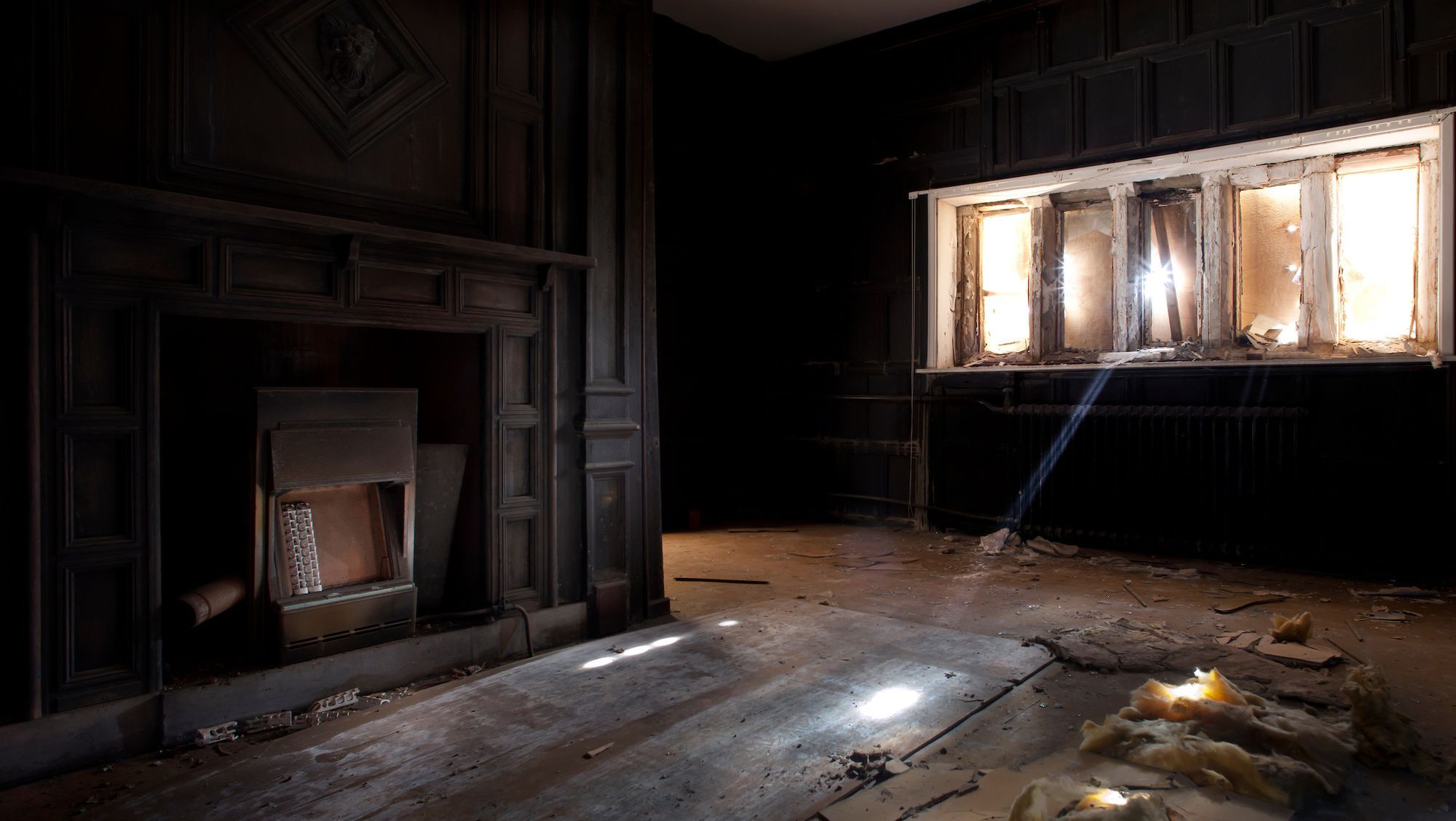This is my book which is in its second draft. It tells the story of how I came out of darkness by exploring and discovering new ways of seeing. It is updated with an additional new section every month and shared via the Patina Edition Members Newsletter.
Prologue
“The body is amazingly stubborn when it comes to sacrificing itself to the annihilating directions of the mind.”
Sylvia Plath
Darkness.
Chest heaving and eyes straining, I arrive at my location by torchlight after forcing open a swollen door and stumbling through a spider's web. My torch is doing little to break the shadows. I blink my eyes to adjust to the low light and, after a few seconds, I see snapshot glimpses of saturated brickwork behind crumbling plaster. Then, on the way to my destination, strange carvings reveal themselves: fruited faces, half figurines, and unnervingly, a framed relief of a man lodging a pronged fork into a severed head.
There’s a scuttling beneath the joists nearby and a dank smell of dry rot. Considering that it’s a winter's day, the atmosphere in the room is close and prickly. The building is sizeable, I can sense its massing beyond the room walls. Somewhere above me, the ancient beams are being stretched by strong gusts of wind. I’m sweating and treading awkwardly with my pack, not sure where and when to unload. It’s a matter of waiting for something to bite, a pull to charge purpose into action.
With expectation overcoming hesitancy, I decide the best option is to stand still, catch my breath and watch. My pupils and aperture are maxed out and fixed. Wet and warped hoarding belittles the daylight from the window opposite but, for a moment, it emits a nuanced glow at its perimeter. It’s gone as quickly as it arrives.
I’m not happy - things aren’t right. I edge myself along the skirting. My shoulder muscles flinch as my tripod catches against exposed nails in the joists. I choose a spot, shift a fallen wad of plaster, fix my gaze and wait behind the lens. As a blast of air whips through the casement, I sense the moment swelling towards resolution. Shrouded by the darkest point of the day, the sheathing rattles and the glint returns. This time it grows in strength and prolongs its stay until a sabred ray from the chamfer cuts its path through the dust motes and pierces the floor with a singular point of light.
Then release - shuttered. The glimmer pocketed and back to darkness.
A kind of alchemy has taken place, the scene before me has been transformed into pixels. My camera has converted the beam of light into electrical impulses and imprisoned them inside the sensor. There’s a deep rooted pleasure in having cornered and captured a shard of light; battling it out in the dark with the chance of success limited to an act of the natural environment: a momentary engorging of the sun behind the secluded window, illuminating the room through a pinhole at a specific point of time. This photograph turned out to be a strange brew, full of light and shade, dust and damp; compounded by angst and fear, anger and wonder. Byron was in there too, inextricably mixed inside - intangible.
I didn’t realise it at the time, but the photograph was a culmination of a war within, a battle of the senses. It felt like a lifetime had gone by before that moment; before an image was tangled up in the present and the past. There was a spirit, a genius loci which possessed the space between the taking of the photograph and the final print. It hadn’t happened by accident, but resulted from a punishing pilgrimage into my creative self. I used my camera to follow an instinct, a conviction. I used my camera as an instrument for learning. With it, I encountered a modus operandi which helped me experience moments that bridged me into the past. With the intercession of my camera, I also discovered that buildings like this were a source of profound wisdom hidden in plain sight.
It wasn’t the easiest of journeys. Through my lens, I took on the giddy heights of Gothic splendour whilst battling the lows of depression, and in my viewfinder met the assertive gaze of Romans whilst faltering in the belief that I was a photographer.
I am a photographer.
I am a photographer because I faced myself in the shutter; I sing the song of buildings because their makers showed me the way, and I’m a sculptor of light because - after being plunged into darkness by depression - my camera taught me how to see.
